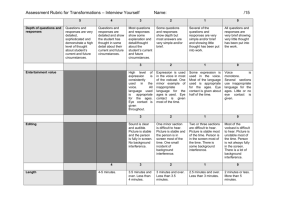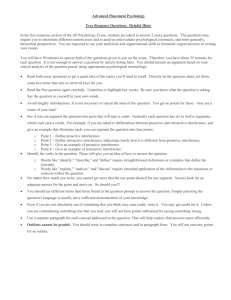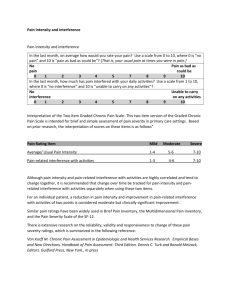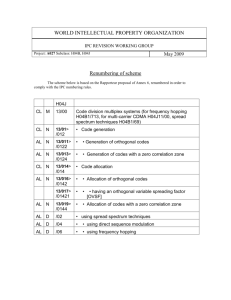compatibility study concerning mobile meteor burst communication
advertisement
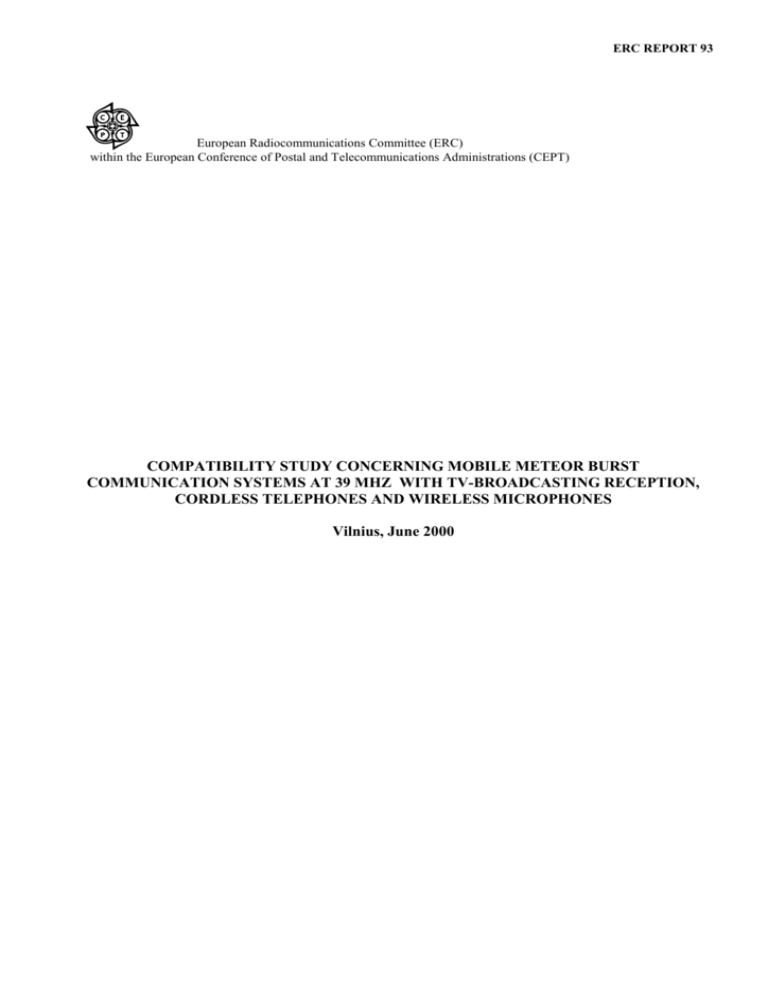
ERC REPORT 93 European Radiocommunications Committee (ERC) within the European Conference of Postal and Telecommunications Administrations (CEPT) COMPATIBILITY STUDY CONCERNING MOBILE METEOR BURST COMMUNICATION SYSTEMS AT 39 MHZ WITH TV-BROADCASTING RECEPTION, CORDLESS TELEPHONES AND WIRELESS MICROPHONES Vilnius, June 2000 ERC REPORT 93 Copyright 2000 the European Conference of Postal and Telecommunications Administrations (CEPT) ERC REPORT 93 Page 1 COMPATIBILITY STUDY CONCERNING MOBILE METEOR BURST COMMUNICATION SYSTEMS AT 39 MHZ WITH TV-BROADCASTING RECEPTION, CORDLESS TELEPHONES AND WIRELESS MICROPHONES 1 INTRODUCTION The purpose of this document is to provide CEPT administrations with an answer concerning the compatibility issue of Mobile Meteor Burst Communication System and TV reception at 39 MHz. In a period of more or less a year the compatibility of Mobile Meteor Burst Communication System and TV reception has been studied. A total number of 13 input documents have been considered on the subject. The administrations of NL, D and F were involved in the studies. The technical specifications of the system under study are in line with ERC Recommendation (00)04 Annex 3. In general there are two compatibility aspects involved, i.e. the EMC immunity aspect and the spectrum compatibility in TV band I. This report reflects only the main results of the study. 2 EMC IMMUNITY ASPECT The radiated immunity level for incident EM radiation by MBCS transmitters on TV sets is established at a level of 115 dBµV/m. The conducted immunity level is measured to be 107 dBµV at 39.1 MHz. It is assumed (according to practical experience in Germany) that this equals to a level of incident EM radiation of 104 dBµV/m (indirect interference). In case of indirect interference caused by conducted current, the use of appropriate filters (to be provided by the operator) will solve the problem. The separation distances based on the EMC levels above can only be specified by approximation. If a building penetration loss 5 dB is assumed, then the result is: • Mobile station (50 W ERP, free space model): 100-200 m. • Auxiliary station (100 W ERP, ITU-R 567 model, 1%): 500-800 m. • Master station (17.5 kW ERP, ITU-R 567 model, 1%): 1500-2000 m. It is possible to avoid interference caused by a master or auxiliary station by means of careful site planning using the appropriate separation distance. The probability that a mobile station will cause interference depends on a lot of circumstances. To mention a few of such circumstances: • the mobile stations will only transmit about 1 time per hour. • message duration is very short (30-100 msecs). • the MBC signal will be horizontally polarised (depolarisation in case of vertically oriented cables). • most of the MBC mobile stations will be outside residential areas at any time. The risk of interference will in practice be negligible because of the combined effects of the very short message duration occurring only about 1 time per hour and the small interference area. ERC REPORT 93 Page 2 Spectrum compatibility with TV Band I Apart from the EMC aspect additional problems were expected in Germany in TV Band I coverage areas. It was stated that interference could occur from mobile units with television reception in that band. Calculations indicated that the range of interference was to vary from 1.4 km (50% location probability) to 5.6 km (1% location probability). To gain practical experience with this additional interference aspect a field test was carried out in a critical band I area. Not a single viewer reported interference to the administration during the test period of one week duration. Probability of interference from mobiles A calculation has been made for the situation in Germany concerning the compatibility with TV Band I reception, which is the most critical case. The result shows that in a worst case situation a very short line disturbance across the screen could occur every 75 minutes for 0.013 % of all television sets. France In France possible problems were expected for wireless microphones and the CT-0 system. Results of the study for France are that: • no major interference problems are to be expected with the wireless microphones in France because of the fact that actual use of the frequency 39.2 MHz is not very high and also because of the receivers being not very susceptible to interference from the meteor scatter application. • introduction of the meteor scatter system will not cause unacceptable interference to the CT-0 system in France providing the following separation distances are respected. For the Master station this means 590 m and for the Mobile station 70 m. Field tests Besides in Germany also field tests have been carried out in The Netherlands, Belgium and in Denmark, making use of mobile units and/or the base stations. No interference was reported by the respective administrations. 3 CONCLUSION A Mobile Meteor Burst Communication System (MMBCS) operating in the band 39.0 - 39.2 MHz is compatible with TV reception in all broadcasting bands to the extent that: • possible interference caused by the fixed stations of the MMBCS can be avoided by means of careful site planning making use of an appropriate separation distance; • possible interference caused by the mobile stations of the MMBCS is negligible in practice; • system specifications of MMBCS are in line with CEPT Recommendation (00)04 Annex 3; • non-MMBCS will require further study1 to asses interference from the fixed terminals (slave stations) to ensure TV reception. _____________ 1 Study in this field is in progress and results are expected in due course.



